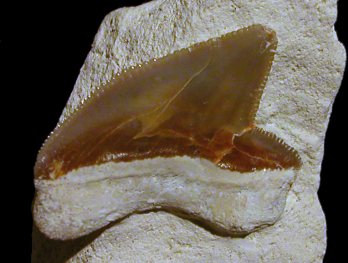 A A |
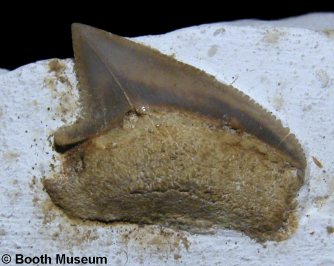 B
B |
|
|
The Anacoracids are a characteristic Chalk fossil, relatively common in the UK, and known from complete specimens in the US. Despite being long extinct, they have acquired the common name of crow Sharks. The distinctive cutting / clipping (?) teeth are typically moderately large, labio-lingually flattened, with a broad, triangular and strongly inclined, posteriorly directed main cusp, resting on a variably developed 'heel' (accessory cusp). Cutting edges bear coarse, prominent serrations in most taxa. The root is typically a tall, broad bar, with a very shallow basal notch.
Two common species are recognised in the Chalk: Squalicorax falcatus, a low and wide form found throughout the Chalk, and S. kaupi, a relatively tall form from the White Chalk only.
The early appearance of this group (Early Albian), simple root and lack of differentiation (i.e. anterior and posterior teeth highly similar) suggest that this is a relatively 'primitive' Lamniform group.
 A A |
 B
B |
1). Squalicorax cf. falcatus, isolated teeth: (A) Labial view (x4.0, Seaford Chalk, East Thanet Coast, Kent, Randell Collection RR1570); (B) Lingual view (x5.0, Booth Museum, BMB 017006, by kind permission of John Cooper).
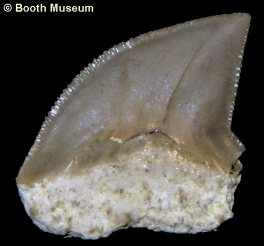 A A |
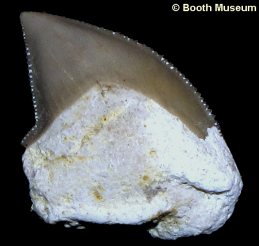 B B |
2). Squalicorax kaupi; (A) Labial and (B) lingual views of an isolated tooth (x4.7, Booth Museum, by kind permission of John Cooper).
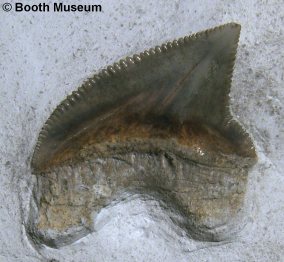 A
A |
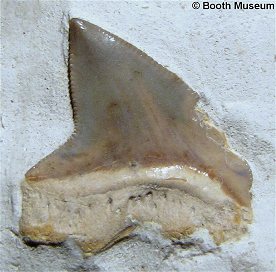 B
B |
3). Squalicorax kaupi; (A) Labial view of a large isolated tooth (x3.5, Booth Museum, BMB 008597, by kind permission of John Cooper); (B) Labial view of a large tooth, part of the apparent association figured below (x4.3, White Chalk, Brighton area, Willett Collection, Booth Museum, BMB 007324, by kind permission of John Cooper).
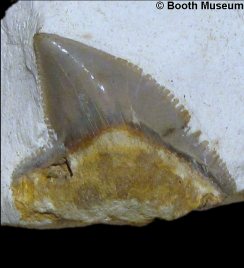 A A |
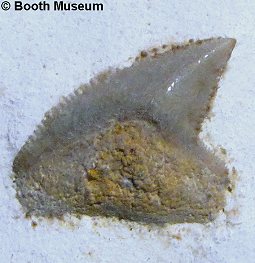 B
B |
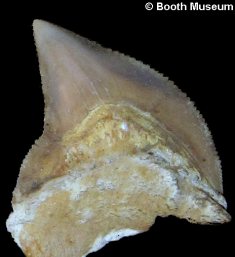 C C |
4). Squalicorax kaupi - an apparent association of teeth (includes the specimen figured above right); (A, B, C) Lingual views (x4.0, White Chalk, Brighton area, Willett Collection, Booth Museum, BMB 007324, by kind permission of John Cooper).
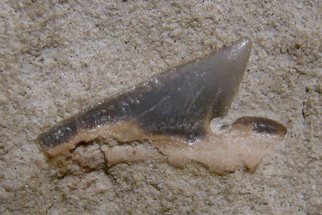 A
A |
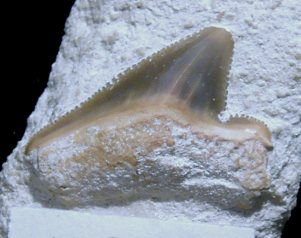 B B |
5). (A) Palaeoanacorax sp? - Labial view of a small isolated tooth. Note the absence of serrations (x11, Totternhoe Stone, Zig-zag Formation, Grey Chalk, Barrington, Cambridgeshire, Randell Collection); (B) Squalicorax falcatus - Lingual view (x6.6, White Chalk, Hope Gap, near Seaford, Sussex, Randell Collection RR0279).